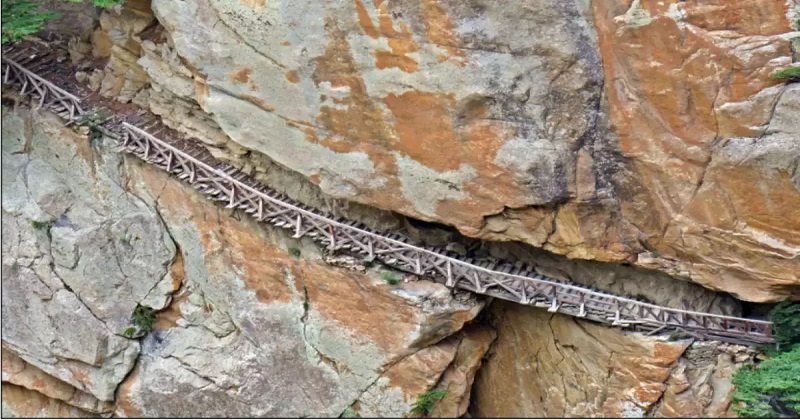
Uttarakhand: An Indo-Tibetan trade, which operated until 1962, is poised to become a new tourist attraction in the state. Located in Uttarkashi city’s Nelong Valley, the trade route was renovated for Rs 65 lakh. After 59 years, a 150-year-old bridge reopened. In the aftermath of the Indo-China war, Gartang Gali was put off limits in 1962. After the Indo-China war, the army used the bridge for ten years.

Along the way to the ancient bridge, one will be able to witness the beauty of the scenery. To visit the Gartang Gali bridge, tourists must register at the Bhairav Ghati outpost. Renovation of the bridge began in September 2020 and was completed in July 2021. Mayur Dixit, the city’s District Magistrate, said that the height, extreme weather and strong winds made the repair and renovation of the dangerous bridge very challenging. When repairing the bridge, workers were lied with safety ropes.
Uttarakhand has restored and reopened a 150-year-old wooden bridge nestled in Uttarkashi's picturesque Nelong Valley, for tourists. Located in the Jad Ganga valley on the Indo-China border, at an altitude of 11,000 feet, this historic skywalk was closed since 1962.#gartanggali pic.twitter.com/7jK94JCpTn
— Uttarakhand Tourism (@UTDBofficial) August 20, 2021
The wooden bridge is located at 11,000 feet in the Gangotri National Park. Gartang Gali bridge is 136 metres long and 1.8 metres wide. It is located 90 kms from Uttarkashi. According to state guidelines, only 10 people will be able to visit the bridge at a time. Tourists on the bridge must maintain a metre’s distance from one another.
Read more: In response to a journalist’s question, BJP leader says, ‘Go to Afghanistan’
The Gartang Gali bridge is not allowed to be used for activities like jumping, dancing, drinking alcohol or carrying inflammable substances. Pathans, who originated in Peshawar, are said to have taken advantage of the mountainside to build their trade route. The route dates back at least to the 17th century. Locals report that Dorji (Tibetan merchants) used to bring woollen cloth, leather and salt to the city via Gartang Gali. Tobacco, tea, jaggery, spices, oil and pulses were among the things they carried back.

Post Your Comments